Heavenly Bread - Panquemao
Saturday, April 5, 2025
Imagine biting into a perfectly golden, slightly sweet bread with a crisp exterior and a soft, fluffy interior. This delicious treat is none other than panquemao, also known as 'pan quemado' or toña, a traditional Spanish Easter bread that has been delighting taste buds for generations.
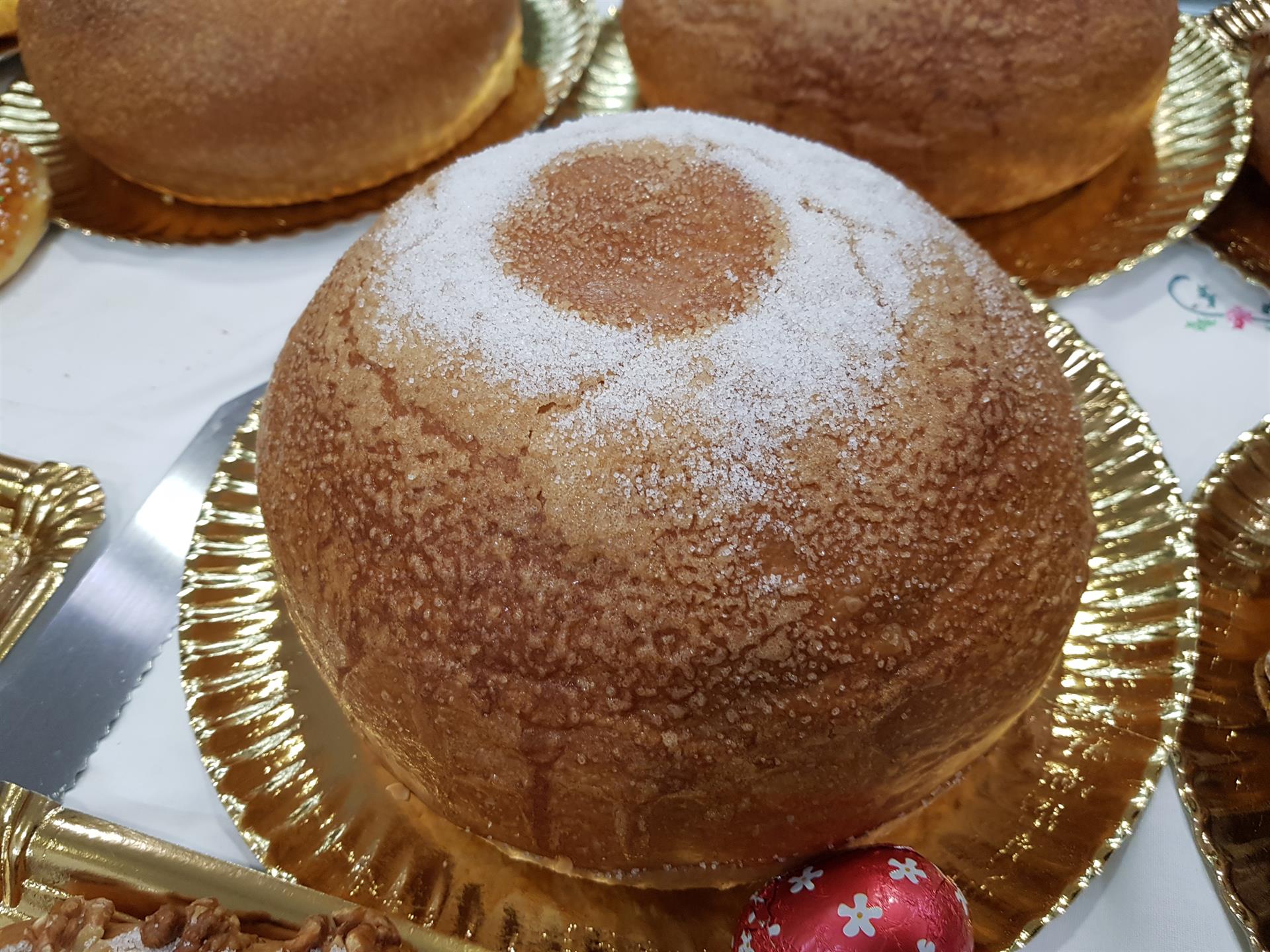
Panquemao, which translates to "burnt bread" in English, is a misleading name for this delightful pastry. Far from being burnt, it's a beautifully golden-brown sweet bread that's particularly popular in the Valencia region of Spain. The name actually comes from its deeply caramelised crust, which gives way to a soft, white, and spongy interior.
This Easter treat shares many similarities with the more widely known mona de pascua, another Spanish Easter cake. However, the key difference lies in the baking process, which gives panquemao its distinctive appearance and texture.
Like many traditional foods, panquemao is deeply rooted in Spanish culture, particularly in the Easter celebrations of the Valencia region. It's not just a bread; it's a symbol of togetherness, family, and the joy of the Easter season.
Typically, panquemao is enjoyed as an afternoon snack or merienda, often accompanied by a steaming cup of hot chocolate. This pairing creates a comforting and indulgent treat that's perfect for sharing with loved ones during the Easter period.
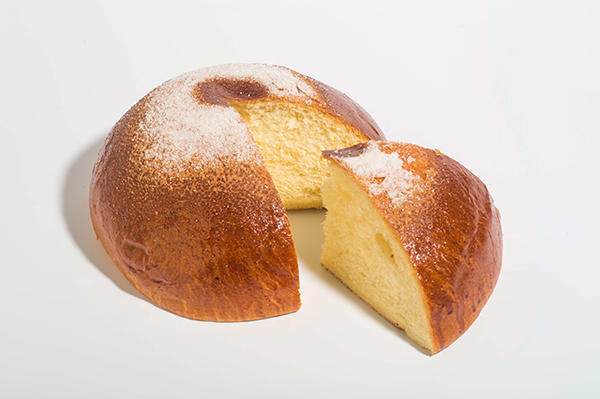
Ingredients:
To create this heavenly bread, you'll need the following ingredients (this recipe serves 8):
15g fresh yeast
50g lukewarm milk
250g strong flour
2 medium eggs
90g white sugar (60g for the dough, 30g for sprinkling)
40g butter at room temperature
A pinch of salt
Zest of half a lemon
1 beaten egg for brushing
These simple ingredients come together to create a bread that's greater than the sum of its parts. The strong flour provides structure, while the eggs and butter contribute to the rich flavour and tender crumb. The lemon zest adds a subtle citrus note that brightens the overall flavour profile.
Creating the perfect panquemao is a labour of love that requires patience and attention to detail. Here's a step-by-step guide to making this delightful bread:
- Begin by mixing the fresh yeast with the lukewarm milk. This step activates the yeast, preparing it to work its magic on the dough.
- In a large mixing bowl or stand mixer, combine the yeast mixture with the strong flour, eggs, 60g of white sugar, butter, salt, and lemon zest. Knead this mixture for about 20 minutes until you have a smooth, elastic, and homogeneous dough. Don't be tempted to add more flour if the dough seems sticky – it will come together beautifully as it rests.
- Shape the dough into a ball and place it in a greased bowl. Cover with cling film or a clean kitchen towel and let it rise until it doubles in volume.
- Once the dough has doubled, gently deflate it by pressing out the air.
- Reshape the dough into a tight ball. This step is crucial for achieving the characteristic shape of panquemao.
- Allow the shaped dough to rise again until it doubles in size. This second rise can take anywhere from 30 minutes to an hour, depending on the ambient temperature.
- Preheat your oven to 220°C (428°F) with heat from both top and bottom.
- Place the risen dough in the preheated oven and bake for 5 minutes. This initial high-heat bake helps to set the structure of the bread.
- Remove the bread from the oven and reduce the temperature to 180°C (356°F).
- Brush the partially baked bread with beaten egg and sprinkle with the remaining 30g of sugar. This step is what gives panquemao its characteristic golden, slightly crunchy crust.
- Return the bread to the oven and bake for an additional 20 minutes, or until it's beautifully golden brown.
- Allow the panquemao to cool completely before slicing and serving.
The Science Behind the Perfect Panquemao
The process of making panquemao involves some fascinating food science. The initial high-temperature bake causes the water in the dough to turn to steam rapidly, which helps the bread to rise quickly and develop a crisp crust. This is known as "oven spring" in baking terms.
The egg wash and sugar sprinkle applied halfway through baking serve multiple purposes. The egg provides proteins and fats that brown beautifully in the heat of the oven, contributing to the golden colour. The sugar caramelises, adding both colour and flavour to the crust.
The two-stage baking process – starting hot and then reducing the temperature – allows for this perfect balance of a crisp, caramelised exterior and a soft, tender interior.
While panquemao is delicious on its own, there are many ways to enjoy this versatile bread:
Traditional: Serve slices of panquemao with a cup of rich, dark hot chocolate. The contrast between the sweet bread and the slightly bitter chocolate is divine.
Savoury Twist: Try serving panquemao with hard-boiled eggs or dry-cured meats like 'longaniza de pascua'. The sweetness of the bread pairs surprisingly well with these savoury elements.

Breakfast: Toast slices of Panquemao and spread with butter and jam for a decadent breakfast treat.
Dessert: Use panquemao as a base for a bread pudding or trifle for a unique twist on classic desserts.
Gift: Panquemao makes for a thoughtful homemade gift during the Easter season. Wrap a loaf in decorative paper and present it to friends or family.
Preserving Your Panquemao
If you find yourself with leftover panquemao (although this is rarely a problem!), you can store it in an airtight container at room temperature for 2-3 days. For longer storage, you can freeze slices of panquemao for up to 3 months. Simply thaw and toast when you're ready to enjoy.
So why not try your hand at making this Spanish delicacy? With a bit of patience and care, you can create a panquemao that rivals those found in the best bakeries of Valencia. And as you bite into that perfectly golden crust and soft, fluffy interior, you'll understand why this humble bread has been cherished for generations. ¡Buen provecho!
 0
Like
Published at 12:21 AM Comments (0)
0
Like
Published at 12:21 AM Comments (0)
The Aranjuez Bullfighting Museum
Saturday, March 29, 2025
In Aranjuez, a historic city just south of Madrid, lies a museum that offers a unique glimpse into one of Spain's most controversial cultural traditions: bullfighting. The Aranjuez Bullfighting Museum, housed within an 18th-century bullring, stands as a testament to the enduring legacy of this contentious spectacle. Whether you're an aficionado of the sport or simply curious about its history, this museum provides a fascinating journey through the world of tauromaquia, the art of bullfighting.

The story of the Aranjuez Bullfighting Museum begins with the construction of its home, the Plaza de Toros (bullring) of Aranjuez. Built between 1790 and 1797, this architectural gem was designed by Juan de Villanueva, the same visionary behind many of Spain's most notable landmarks. The bullring was not merely a venue for entertainment; it was conceived as an integral part of the royal palace complex in Aranjuez, reflecting the deep-rooted connection between the Spanish monarchy and the tradition of bullfighting.
King Carlos IV and his wife, María Luisa de Parma, inaugurated the bullring, cementing its status as a site of royal significance. This regal association set the tone for the venue's future, ensuring its place as a cultural cornerstone of Aranjuez for centuries to come.
The Plaza de Toros of Aranjuez is a prime example of traditional Spanish bullring architecture. Its circular layout, with rows of seating surrounding the central arena, creates an intimate atmosphere that brings spectators close to the action. The design not only serves a practical purpose but also contributes to the dramatic tension that characterises bullfighting events.

As visitors approach the museum, they're greeted by the imposing façade of the bullring. The 'Puerta de Cuadrillas', or the entrance for the bullfighting teams, serves as the gateway to the museum, immediately immersing guests in the world of tauromaquia.
Upon entering the museum, visitors are transported back in time. The collection housed within these historic walls is one of the most comprehensive in Spain, offering a detailed look at the evolution of bullfighting from its earliest days to the present. The museum's exhibits are thoughtfully curated to provide a holistic view of bullfighting culture. Visitors can marvel at an impressive array of matador costumes, known as 'trajes de luces' or 'suits of lights'. These ornate outfits, adorned with intricate gold and silver embroidery, showcase the pageantry and artistry associated with the spectacle.
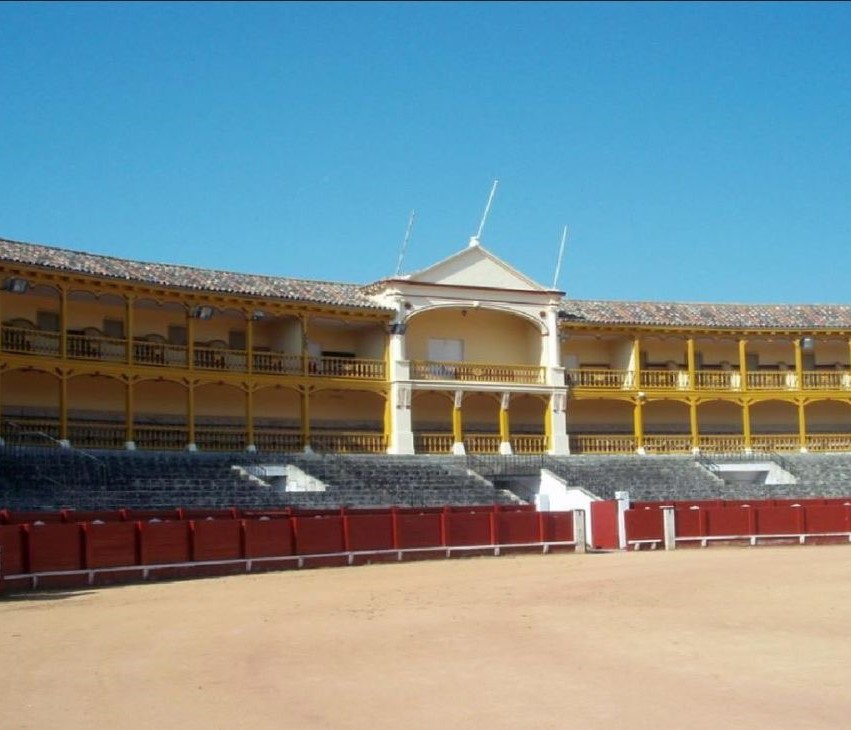
One of the most intriguing displays features the protective gear worn by picadors, the mounted horsemen who participate in bullfights. The heavy leather chaps and reinforced saddles offer a tangible sense of the dangers faced by both man and horse in the ring.
A particularly noteworthy exhibit showcases a pair of drums that date back to the 18th century. These instruments, which miraculously survived a fire that once ravaged the building, serve as a poignant link to the bullring's earliest days. The museum doesn't shy away from the controversial aspects of bullfighting. Instead, it presents the practice as a complex art form, deeply ingrained in Spanish culture. Displays explain the different stages of a bullfight, the roles of various participants, and the intricate rules and traditions that govern the spectacle.
Visitors can learn about famous matadors who have graced the Aranjuez ring, their triumphs and tragedies immortalised in photographs, posters, and personal effects. The museum also delves into the breeding of fighting bulls, explaining how these animals are specially raised for the ring and the characteristics that make a bull suitable for bullfighting.
While the museum primarily focuses on bullfighting, it also provides valuable insights into the broader cultural context of the practice. Exhibits touch on the influence of bullfighting on Spanish art, literature, and music. Visitors can see how this controversial tradition has inspired painters like Goya and Picasso, writers such as Hemingway, and countless other artists across various mediums.
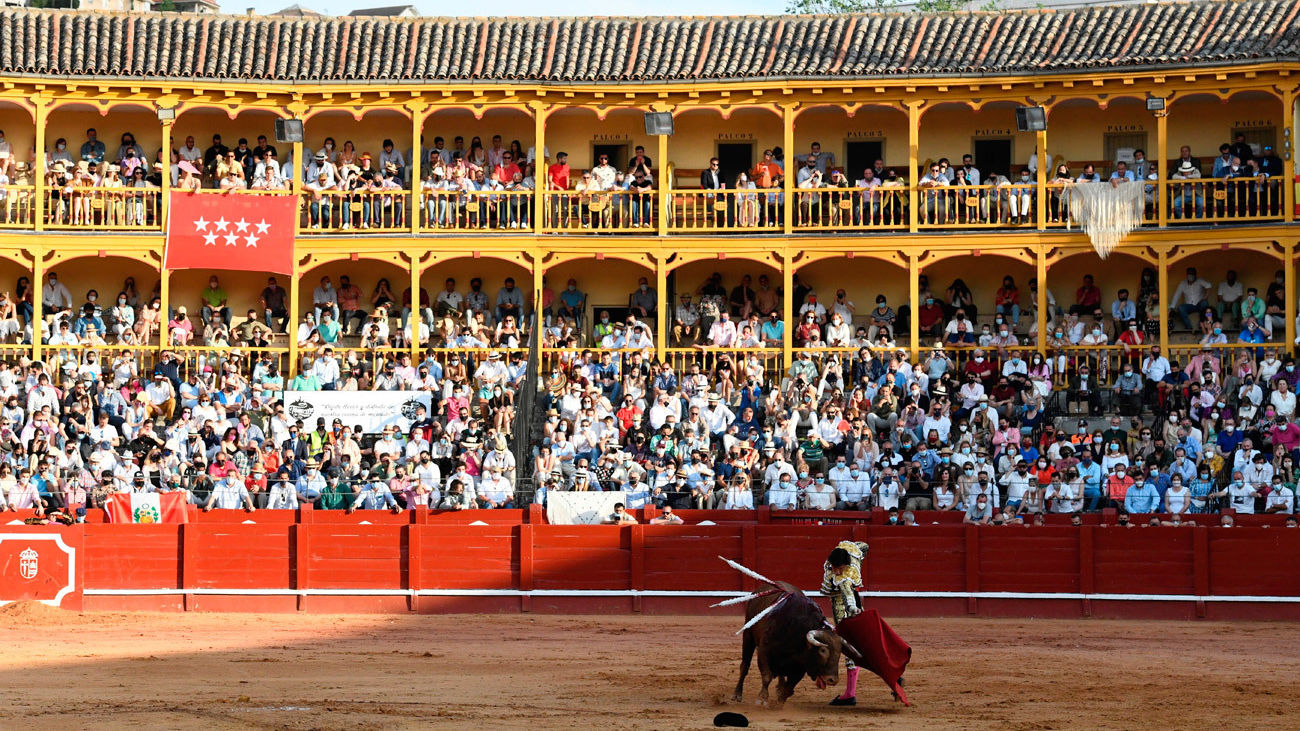
The museum also explores the role of bullfighting in local festivities and its importance to the economy of Aranjuez and other Spanish towns. This broader perspective helps visitors understand why, despite growing opposition, bullfighting remains an integral part of Spanish cultural identity for many.
Like many historical landmarks, the Plaza de Toros of Aranjuez has faced challenges related to maintenance and preservation over the years. However, recent efforts have been made to restore and preserve both the bullring and its museum, recognising their cultural and architectural importance. These restoration efforts have not only ensured the structural integrity of the building but have also allowed for the expansion and improvement of the museum's facilities. Today, the Aranjuez Bullfighting Museum stands as a well-maintained tribute to a controversial yet undeniably significant aspect of Spanish heritage.
For those seeking a more in-depth understanding of the museum and its contents, guided tours are available. These tours offer visitors clear explanations of the bullring's architecture, the various rooms within the complex, and the functions of the professionals involved in a bullfight. Tour guides also provide historical context, sharing stories about famous bullfights that have taken place in Aranjuez and explaining how the tradition of bullfighting has evolved over time. These guided experiences can greatly enhance a visitor's understanding and appreciation of the exhibits, regardless of their prior knowledge of bullfighting.
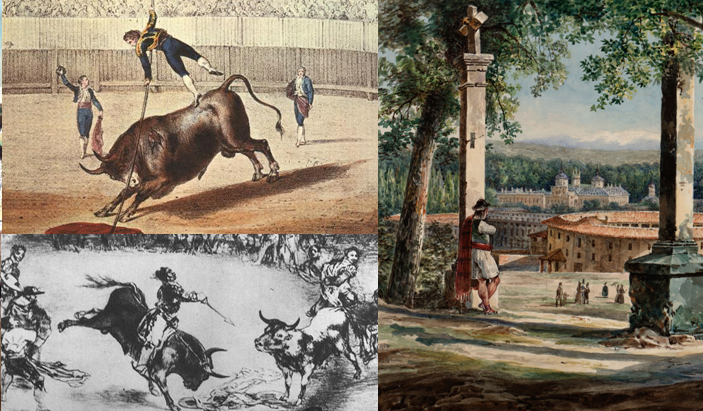
It's impossible to discuss the Aranjuez Bullfighting Museum without acknowledging the controversy surrounding bullfighting itself. While the museum presents bullfighting as an art form and cultural tradition, it also provides an opportunity for visitors to reflect on the practice's ethical implications.
The museum doesn't shy away from the debate surrounding bullfighting. Instead, it presents information that allows visitors to form their own opinions. This balanced approach makes the museum an interesting destination not only for bullfighting enthusiasts but also for those who are critical of the practice or simply curious about its place in Spanish culture.
While the Bullfighting Museum is undoubtedly a highlight, Aranjuez itself offers much more for the curious traveller. The city, a UNESCO World Heritage site, is renowned for its royal palace, beautiful gardens, and rich history. Visitors to the museum can easily extend their cultural exploration to include these other significant sites.
 5
Like
Published at 12:16 AM Comments (0)
5
Like
Published at 12:16 AM Comments (0)
The Sistine Chapel of San Antonio de los Alemanes - Madrid
Friday, March 21, 2025

For those who find themselves wandering through the bustling Gran Via Avenue in Madrid, it's all too easy to miss the unassuming exterior of a building that harbours one of the city's most splendid surprises. Concealed behind a modest façade on a quiet corner lies the Church of San Antonio de los Alemanes, often hailed as the "Sistine Chapel of Madrid." This small yet remarkable church offers visitors an unexpected journey into the brilliance of Baroque art and history.
A Historical Glimpse
San Antonio de los Alemanes's origins date back to the 17th century, when it was originally founded as a hospital for Portuguese nationals during the period when Portugal was under Spanish dominion. Following Portuguese independence, the church was rededicated to serving German-speaking pilgrims, leading to its current name—Church of Saint Anthony of the Germans.
The church stands as a testament to centuries of religious and cultural shifts in Spain. Over time, the relatively austere exterior has managed to shield a lavishly decorated interior that tells stories of faith, miracles, and historical legacies.
Stepping Inside: An Artistic Revelation
Once inside, one can instantly understand why the church is referred to as Madrid's Sistine Chapel. The interior boasts a domed ceiling and walls sumptuously adorned with a series of frescoes that capture the eye and spirit. These vibrant artworks depict scenes from the life and miracles of St. Anthony of Padua, a Franciscan saint born in Lisbon in 1195.
Among these masterpieces, the fresco of St. Anthony takes centre stage. He is magnificently portrayed kneeling on a cloud, arms open wide to receive the Child Jesus and the Virgin Mary. The level of detail and the emotional intensity captured in this scene is nothing short of awe-inspiring.
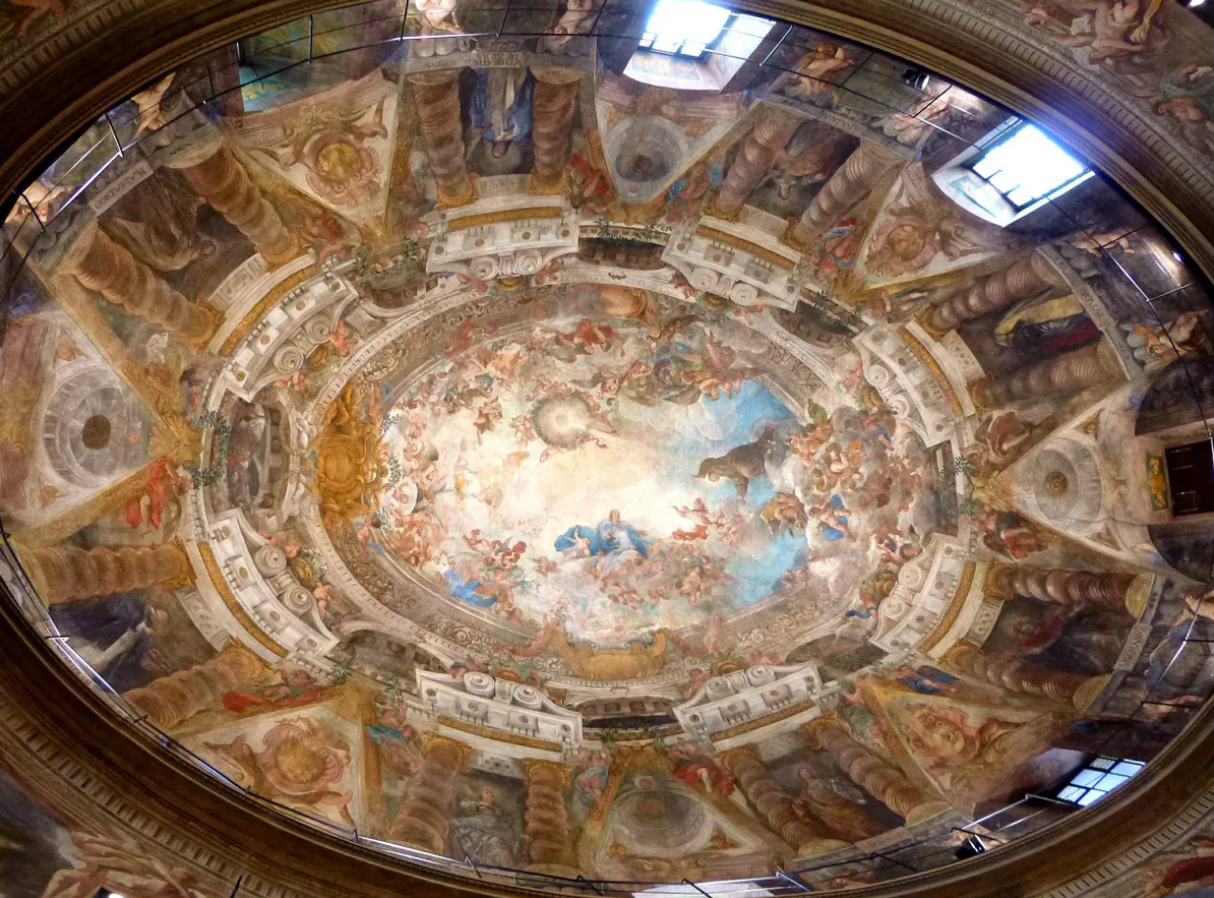
An Artistic Collaboration
The frescoes that engulf the church's interior were brought to life by the collaborative efforts of several artists, based on sketches by the Italian painters Coloma and Mitelli. The actual painting commenced around 1662 and involved the hands and visions of Carreño de Miranda and Francisco de Rizzi, commissioned by King Felipe IV of Spain. The dedication and talent poured into these works have rendered the church a visual symphony of colour and form, arresting in its magnificence.
A Layered Tapestry of Saintly Narratives
The spectrum of frescoes does not end with the central depiction of St. Anthony. The upper levels of the church's walls portray various miracles attributed to the saint. Each scene is a window into an episode that illustrates divine intervention and the saint's boundless compassion. Below these celestial narratives, one can find portraits of several saintly kings from history, creating an intricate mosaic of inspiration and reverence.
The Crypt: A Silent Echo of the Past
Beneath the church lies a crypt, adding another layer to the fascination held within this historic site. This crypt contains several niches where members of the Spanish royal family have been laid to rest, some of which date back to the Middle Ages. In addition to the royal occupants, there are also niches that hold the remains of children and a few unknown bodies, enveloping the space in an aura of mystery and quietude.

Visiting the Sistine Chapel of Madrid
For those inclined to uncover the depths of Madrid's history and artistic heritage, a visit to San Antonio de los Alemanes is a must. Conveniently located near the Gran Via tube station, it is easily accessible yet delightfully secluded from the usual tourist trail. From Gran Via, take Valverde Street and then the third street on the left, Calle Puebla, where this hidden gem awaits.
The church not only offers a feast for the eyes but also a contemplative space where visitors can reflect on the stories and artistry that have been preserved through the ages.
To make the most of your visit, here are a few tips:
- Transport: The nearest tube station is Gran Via, making it readily accessible by public transport.
- Location: From Gran Via, take Valverde Street and turn onto the third street on the left, Calle Puebla.
- Best Time to Visit: While the church is relatively quiet throughout the day, visiting during weekdays can offer a more peaceful experience.
San Antonio de los Alemanes stands as a custodian of some of Madrid's finest baroque art and historical narratives. Whether you are an art enthusiast, a history buff, or simply a curious traveller, the church provides an enriching experience that melds the sacred with the artistic in the most splendid fashion. Next time you find yourself in Madrid, step off the beaten path and uncover the splendour that lies within this modest yet extraordinary sanctuary.
 1
Like
Published at 11:04 PM Comments (0)
1
Like
Published at 11:04 PM Comments (0)
Experience the Magic of Cherry Blossoms in Valle del Jerte, Spain in 2025
Saturday, March 8, 2025
As we usher in the warming temperatures of spring, nature begins to awaken and showcase its glorious beauty. One of the most captivating spectacles of this season is undoubtedly the cherry blossom, and for those in Spain, the Valle del Jerte in Extremadura is the destination to catch this vibrant display. Known for its incredible scenic beauty, the valley comes alive in waves of pink and white blooms each spring, set against the dramatic backdrop of the Sierra de Gredos mountains. Whether you’re interested in a leisurely walk, an adventurous hike, cycling, or horseback riding, Valle del Jerte offers an idyllic springtime experience. Here’s everything you need to know for your visit to Spain’s cherry blossom haven in 2025.
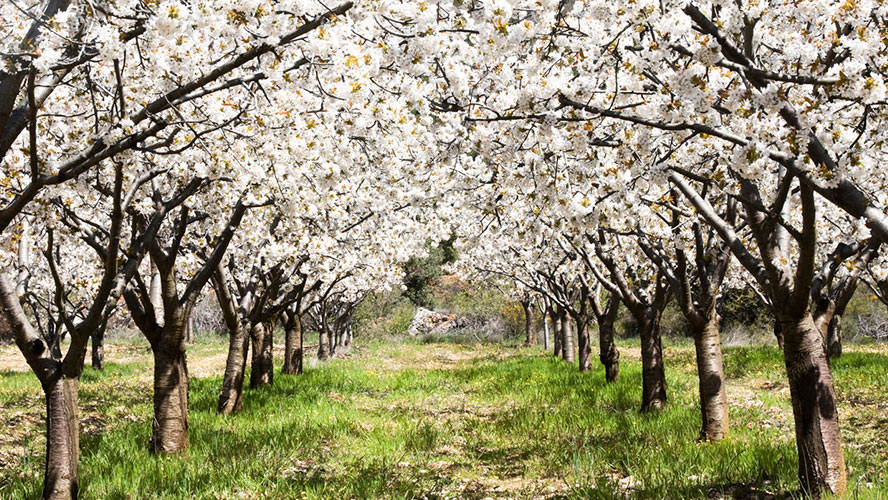
Understanding Cherry Blossoms
Cherry blossoms, often called “flor de cerezo” in Spanish, originate from cherry trees, which are famed for producing the succulent, red cherries we enjoy. However, it’s essential to note that different cherry tree varieties exist; some are cultivated mainly for their delectable fruit, while others are cherished for their ornamental blossoms. These delicate flowers range in shades of pink to purple, creating a visually stunning scene when they bloom.
Symbolism of Cherry Blossoms
Cherry blossoms hold profound cultural significance across various countries. They frequently symbolise the beauty of new beginnings and rejuvenation that come with spring. However, their brief blooming period, lasting only about two weeks, serves as a poignant reminder of the fleeting and transitory nature of life.
When Do Cherry Blossoms Bloom in Spain?
Typically, cherry trees in Spain commence their blooming period towards the end of March and early April, although this can vary depending on weather and environmental conditions. According to the tourism board in Extremadura, predicting the exact blooming dates for 2025 is challenging at this point; however, it's expected that the cherry blossoms in the Jerte Valley will be in full bloom between 20th March and 10th April. Generally, the flowering period spans around ten days, making late March the likely optimal time to plan your visit to witness these natural wonders.
The Best Spot to See Cherry Blossoms in Spain: Valle del Jerte
Without a doubt, Valle del Jerte is the most renowned location in Spain for viewing cherry blossoms. Nestled in the province of Cáceres, Extremadura, this picturesque valley is home to over 1.5 million cherry trees. Each year, this spectacular natural event draws thousands of visitors from across the globe, establishing the valley as one of Extremadura’s prime tourist attractions. During peak bloom, the valley is transformed into a breathtaking expanse of pink and white petals. For those seeking a more serene experience, weekdays are the best time to visit, as the crowds tend to be smaller.
The Valle del Jerte Cherry Blossom Festival
Every spring, as the cherry trees burst into bloom, the region of Valle del Jerte celebrates with a series of special events. The Fiesta del Cerezo en Flor, or Cherry Blossom Festival, is a highlight of this season, providing a glimpse into the region’s rich cultural and culinary traditions. Visitors can engage in various activities that showcase the local customs, gastronomy, and ways of life.
Particularly notable during the festival are the visits to traditional wine cellars, forges, and wine presses, which for a few days are presented as they were decades ago. These historical sites played significant roles in the daily lives of the valley’s inhabitants. Additionally, some houses that have preserved the area's traditional architecture open their doors to offer a unique look at how generations past lived.

Visiting Valle del Jerte
To fully experience Valle del Jerte, consider exploring its charming towns and villages such as Casas del Castañar, El Torno, and Cabezuela del Valle. These visits offer diverse opportunities to appreciate the breathtaking cherry blossoms from different vantage points. One of the iconic sights is the statues of naked men gazing over the valley from the El Torno viewpoint.
It’s important to note that cherry blossoms don’t bloom uniformly across the valley. Trees at lower altitudes bloom first, while those situated at higher, cooler elevations follow later. Thus, travelling through the valley during the blossom season can provide a continuous display of floral beauty.
How to Plan Your Trip
Planning a trip to Valle del Jerte isn’t just about timing; accommodation and travel arrangements are equally important. Here are a few tips to ensure a seamless visit:
-
Book in Advance: Given the popularity of the cherry blossom season, make sure to book your accommodation well in advance. Look for places that offer scenic views of the valley to enhance your experience.
-
Travel During Off-Peak Times: If possible, plan your visit for weekdays to avoid the weekend crowds. This can give you a more peaceful and enjoyable experience.
-
Hire a Local Guide: A local guide can provide valuable insights into the best spots for viewing cherry blossoms and share fascinating stories and historical facts about the area.
Embrace the Experience
Valle del Jerte offers more than just a visual feast of cherry blossoms; it’s an opportunity to immerse yourself in the natural beauty, cultural richness, and historical depth of the region. Whether you’re wandering through quaint villages, enjoying the Cherry Blossom Festival, or simply taking in the serene landscapes, this destination promises an unforgettable springtime adventure.
A trip to Valle del Jerte in the spring of 2025 promises a remarkable encounter with nature’s splendour. The stunning display of cherry blossoms, combined with the cultural richness of the region, makes it a must-visit destination for anyone seeking to embrace the rejuvenating spirit of spring.
 0
Like
Published at 12:37 AM Comments (0)
0
Like
Published at 12:37 AM Comments (0)
Have you ever been to Lugo?
Friday, February 28, 2025
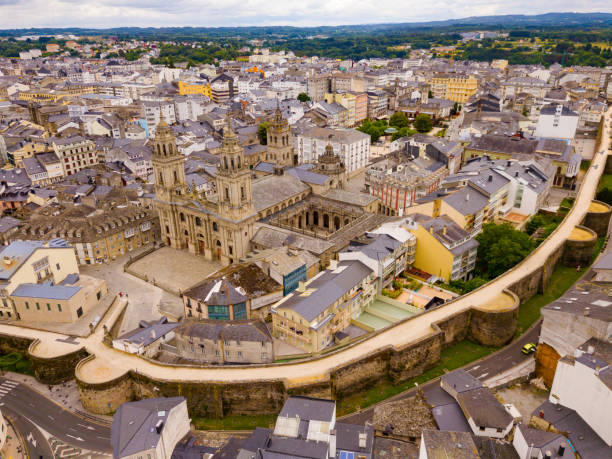
The walls of Lugo are an outstanding construction which illustrates various significant periods of human history. Starting with their Roman origins and passing through the problematical Middle Ages to the innovatory and disturbed 19th century, they unite in a single monumental construction over 2 km long different proofs and facets of the evolution of the town from the original Lucus Augusti.
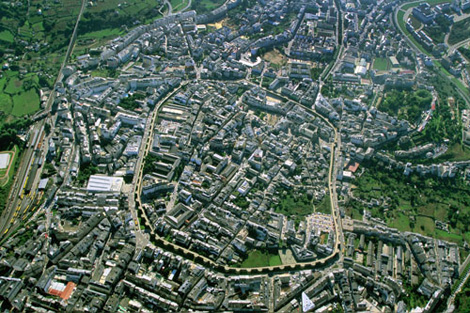
There was a Roman military camp here during the campaign of Augustus, and it was here that the new town, Lucus Augusti, was founded in 15-13 BCE. The original chequerboard plan did not require the town to be enclosed by a defensive wall, because of the effectiveness of the Pax Romana. The town prospered in the succeeding centuries, because of the mineral resources of the region. This administrative centre acquired impressive public buildings and luxurious urban villas, which spread over a wide area.
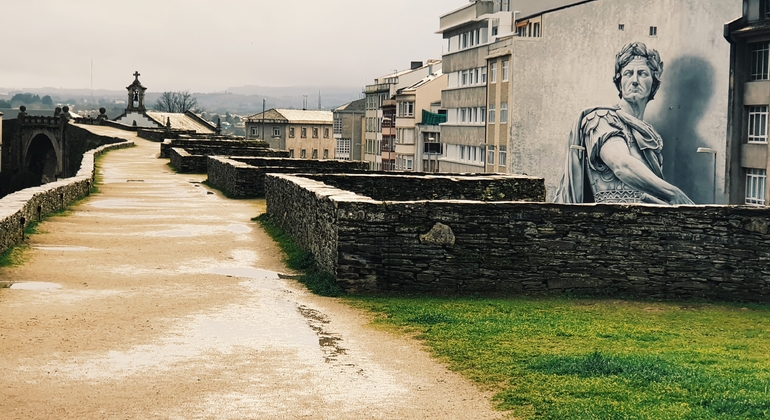
However, in the mid-2nd century Frankish and Alemannic invaders crossed the limes and ravaged Gaul, penetrating into Hispania before being driven out. This resulted in the construction of massive urban defences at all the towns of the western Roman provinces. Lucus received its walls between 263 and 276 (perhaps less against barbarian invaders from across the Rhine than against the local tribesmen, who had never fully accepted the Roman occupation of their lands). As in most colonial towns, the area enclosed by the walls was less than that of the urban settlement: a considerable part of the town in the south-east remained outside. Despite the strength of its fortifications, Lugo was unable to resist the Suevi when they swept into the peninsula in the early 5th century and destroyed the town by fire. They were to be dislodged in their turn by the Visigoths, who captured the town in 457 and settled it once again. The irresistible Moorish invasion of Spain saw Lugo overwhelmed and sacked in 714, but it was recaptured for Christendom by Alfonso I of Asturias in 755 and restored by Bishop Odarius. The town was to be ravaged once again in 968 by the Normans, on their way to the Mediterranean, and it was not restored until the following century.
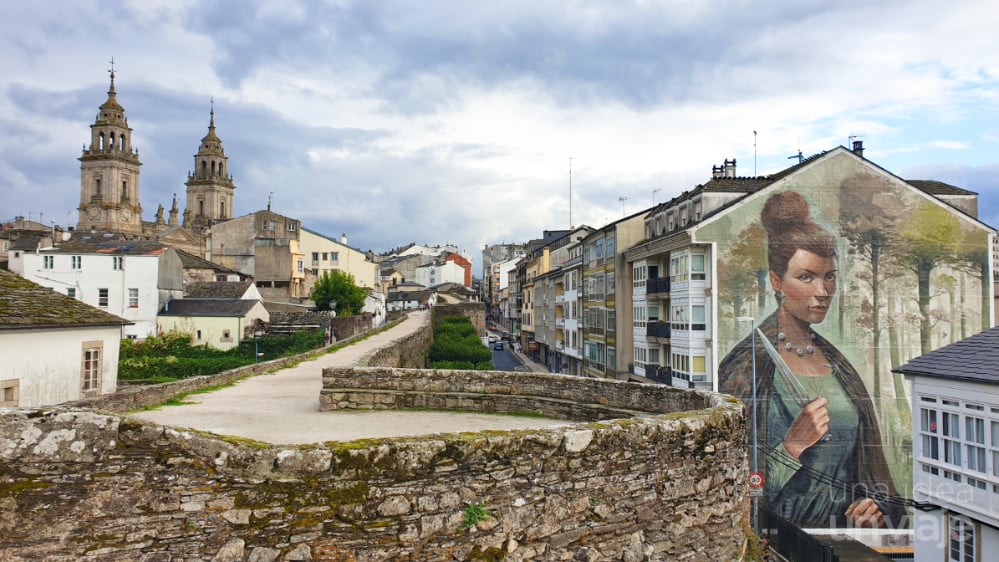
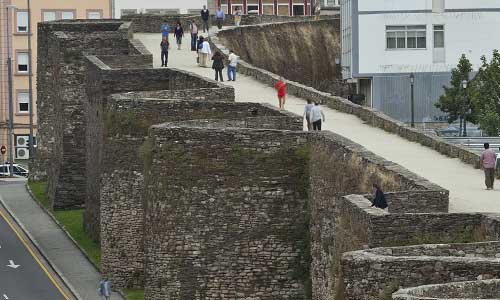
The structure of the Roman walls of Lugo consists of internal and external stone facings with a core filling of earth, stones and pieces of worked Roman stone from demolished buildings. There are ten gates: five ancient and five recent. Five stairways and a ramp give access to the parapet walk. A number of double staircases giving access from the parapet walk to the towers have been found within the thickness of the walls, and it is assumed that each of the towers was provided with similar stairways. Of the original interval towers, 46 have survived intact, and there are a further 39 that are wholly or partly dismantled. They are spaced at irregular intervals round the walls; they were two-storeyed and most of them are roughly semi-circular in plan, the gap in the wall in which they were constructed varying in width from 5.35 m to 12.80 m.
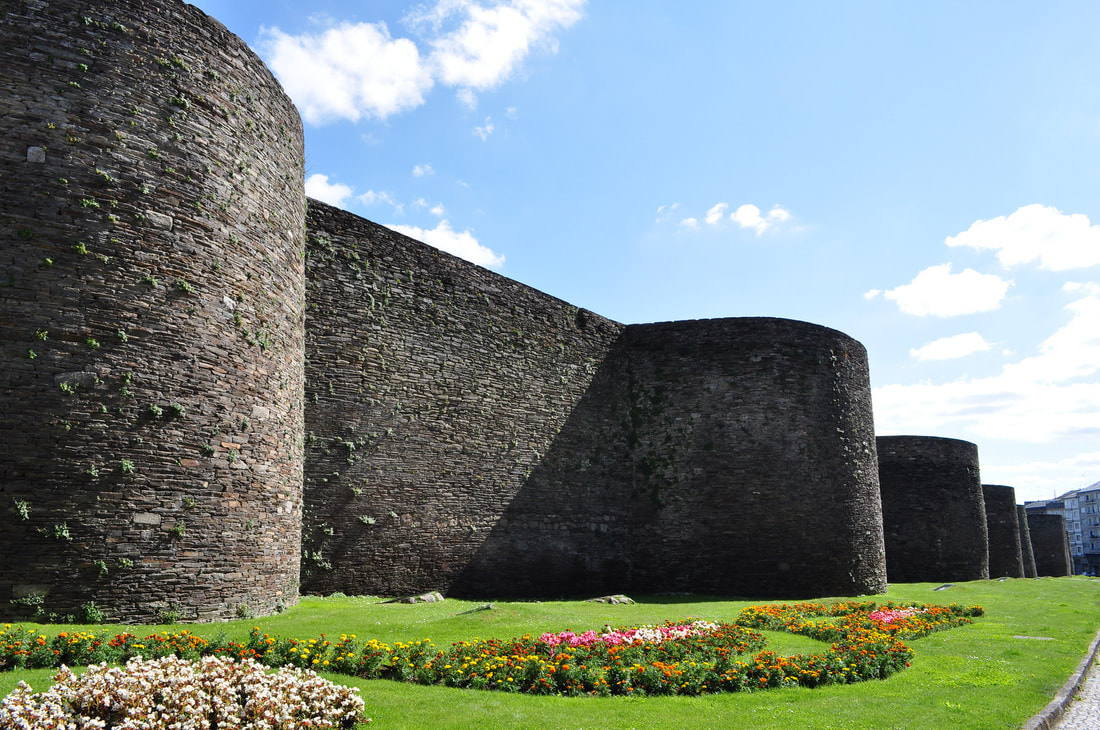
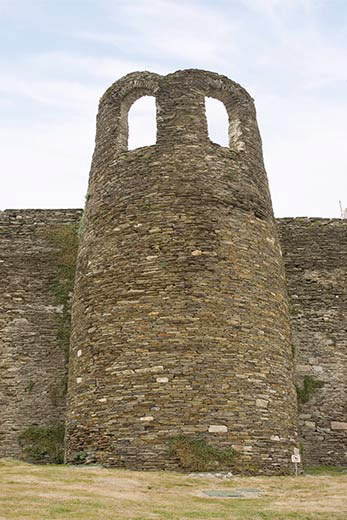 Several take the form of slightly tapering truncated cones, and a few have rectangular plans. One of the towers, known as La Moschera, is surmounted by the remains of its superstructure containing two arched windows. There is a variety of materials to be observed in their construction, and in that of the walls themselves. The main stones used were dressed granite and, in particular, slate. There is some variety in the forms of laying the stones and in their size. In some cases the slate walls rise from foundation courses of granite; in other examples these basal courses are also in slate. Yet another common wall make-up consists of the courses in the lower half or two-thirds being of dressed granite with the remainder in slate, but with some granite blocks interspersed. The parapet is crenellated in places, but this is certainly post-Roman work. Considerable reconstruction work took place at what is now known as the Reducto de Santa Cristina in 1836- 37, to create a fort that accorded with the military architecture of the period. Several take the form of slightly tapering truncated cones, and a few have rectangular plans. One of the towers, known as La Moschera, is surmounted by the remains of its superstructure containing two arched windows. There is a variety of materials to be observed in their construction, and in that of the walls themselves. The main stones used were dressed granite and, in particular, slate. There is some variety in the forms of laying the stones and in their size. In some cases the slate walls rise from foundation courses of granite; in other examples these basal courses are also in slate. Yet another common wall make-up consists of the courses in the lower half or two-thirds being of dressed granite with the remainder in slate, but with some granite blocks interspersed. The parapet is crenellated in places, but this is certainly post-Roman work. Considerable reconstruction work took place at what is now known as the Reducto de Santa Cristina in 1836- 37, to create a fort that accorded with the military architecture of the period.
The original gates have undergone a number of transformations since the 3rd century. The best preserved are the Falsa Gate and the Miñá Gate, which still has its original vaulted arch set between two towers, in characteristic Roman form; traces of the now disappeared guard chamber can be seen on the interior wall (also visible at the San Pedro Gate).
A walkway over the walls now allows visitors to stroll along the entire length. The town also has a visitor's centre dedicated to the walls, the Centro de Interpretación de la Muralla. Since the inscription of the walls on the World Heritage List in 2000, Lugo holds a popular festival called Arde Lucus each year to celebrate its Roman past.
Ver mapa más grande
 1
Like
Published at 8:48 AM Comments (1)
1
Like
Published at 8:48 AM Comments (1)
A Journey Through Time at the Rio Tinto Park
Thursday, February 20, 2025
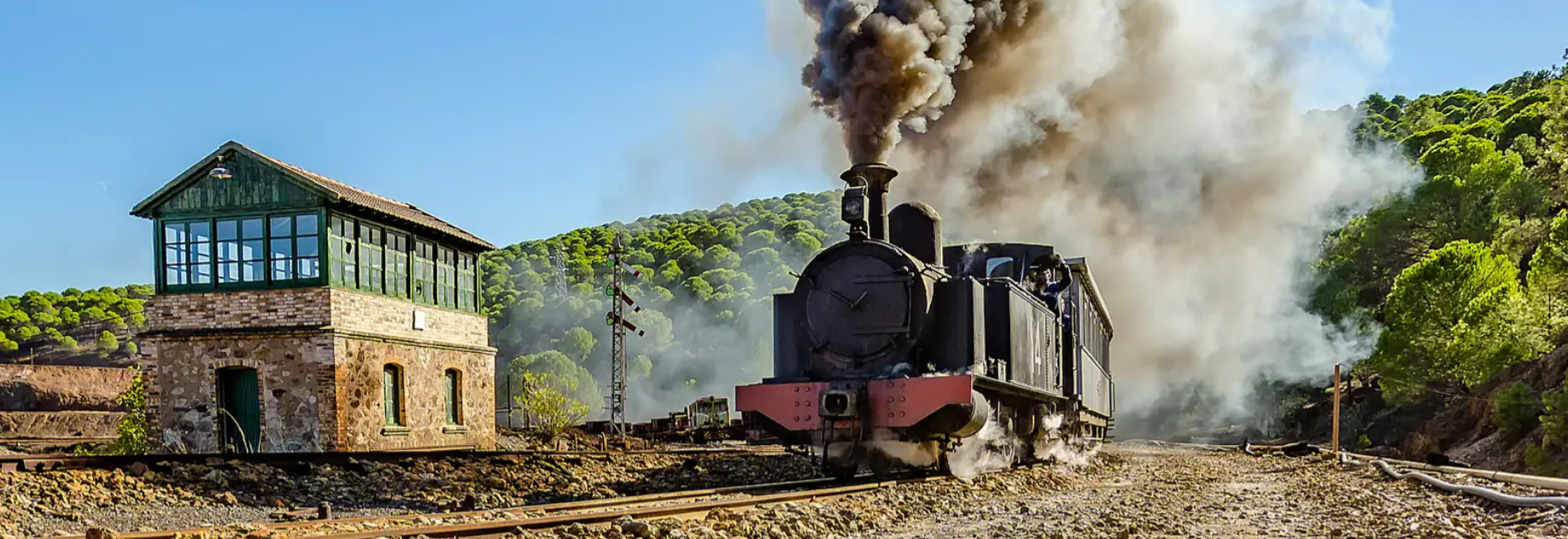
Nestled in the heart of Spain's Huelva province, the Rio Tinto Mining Park stands as an evocative testament to the region's rich mining history. Central to this historical mosaic is the tourist train ride, a heritage railway that offers visitors a unique opportunity to traverse the scenic landscapes and delve into the mining lore that has shaped the area for centuries.
The Rio Tinto Mining Park, a sprawling 4,500-hectare facility, serves as an open-air museum, preserving the legacy of more than 5,000 years of mining activity. Among its myriad attractions, the tourist railway is arguably the most compelling. This century-old railway stretches for 12 kilometres and provides an immersive experience that marries the romance of vintage rail travel with the gritty allure of industrial history.
The Railway's Genesis: From Commercial Lifeline to Tourist Attraction
The origins of the tourist railway are closely intertwined with the development of the Rio Tinto mines. In the late 19th century, the British-owned Rio Tinto Company Limited engineered a network of railways to facilitate the transport of copper ore from the mines to Huelva's port. These railways were vital commercial arteries, ensuring the steady flow of minerals and processing materials.
By the early 21st century, as the mining industry in Rio Tinto dwindled, a concerted effort to preserve and repurpose the railway began. Through the meticulous restoration, the railway was transformed into a tourist railway, offering a fresh lease of life to these storied tracks.
Embarking on a journey aboard the Ferrocarril Turístico Minero is akin to stepping back in time. Visitors board vintage carriages, carefully restored to their former glory. The rhythmic clatter of wheels on rails, the swaying journey, and the occasional whistle transport passengers to a bygone era.
Departing from the historic station at Minas de Rio Tinto, the train meanders through terrains that narrate tales of geological wonder and human endeavour. Copper-coloured earth, reminiscent of Mars’ surface, provides a striking contrast against the greenery that dots the landscape sporadically. As the train chugs along, passengers are treated to panoramic views of the Rio Tinto River’s ochre-hued waters, bearing witness to the natural and industrial forces that have sculpted this extraordinary landscape.
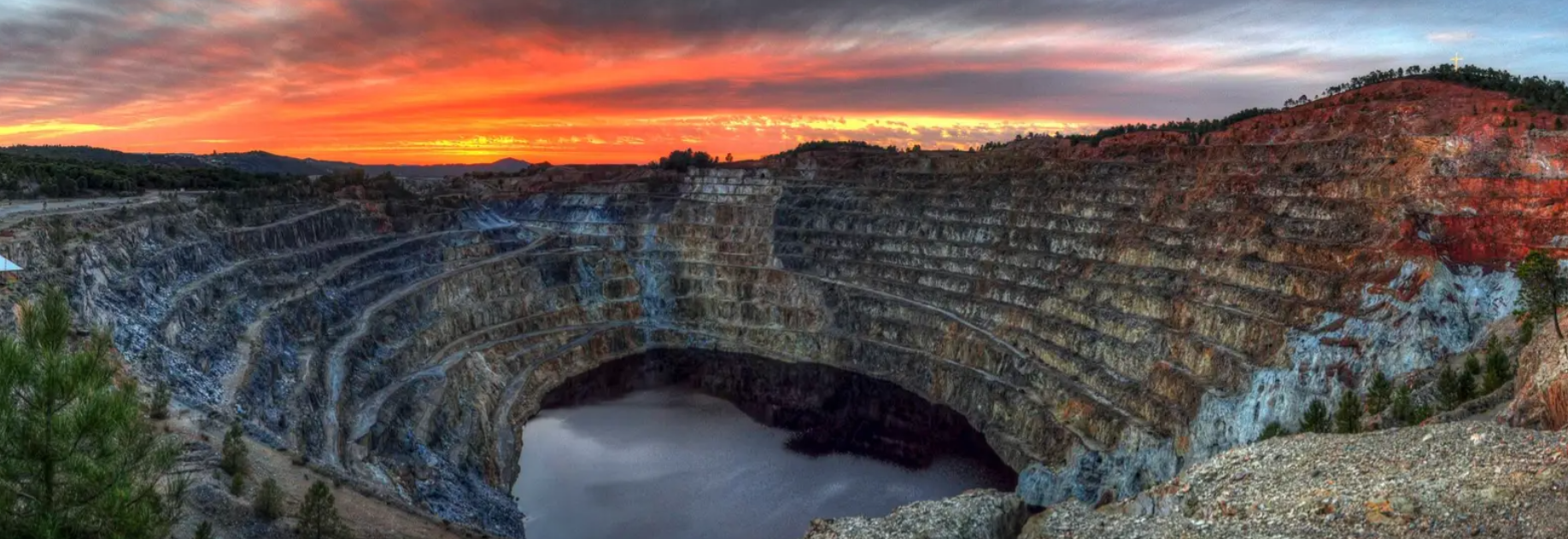
Highlights Along the Route
The railway route is punctuated with noteworthy landmarks that enrich the journey:
-
Corta Atalaya: Once Europe's largest open-pit mine, Corta Atalaya’s vast, terraced expanse offers visitors a staggering perspective on the scale of mining operations. Although no longer active, its sheer size and the scars left upon the landscape evoke a profound sense of industrial achievement.
-
Ernest Lluch Powerplant: Named after the Spanish economist and politician, this decommissioned powerplant stands as a sombre relic of the industrial age, juxtaposed against the tranquillity of the surrounding scenery.
-
Berrocal Alto Mine: A testament to ancient mining practices, Berrocal Alto Mine's ruins illustrate the evolution of extraction techniques through the ages.
Bridging Past and Present
The railway serves not only as a conduit to the past but also as a bridge to the present. Modern interpretative centres along the route provide context and commentary, ensuring visitors appreciate both the historical significance and present-day relevance of the region's mining heritage. The narrative extends beyond industrial exploits to encompass the archaeological and ecological facets of the region, with emphasis on ongoing efforts to rehabilitate and repurpose former mining areas.
The park encapsulates a broader educational mission, using the railway as a didactic tool. Educational programmes tailored for school groups and academic researchers help disseminate knowledge about geology, engineering, and environmental science. Additionally, the railway occasionally hosts cultural events, including historical reenactments and themed excursions, enriching the visitor experience and fostering an appreciation for the region's cultural history.
Visitor Information
The railway operates various routes with differing durations, accommodating both leisurely tours and more in-depth explorations. Ticketing information, operating schedules, and special event announcements are accessible via the "Parque Minero de Rio Tinto’s" official website.
Tips for a Memorable Visit
-
Advance Booking: Given the popularity of the railway, especially during weekends and holidays, it’s prudent to book tickets in advance.
-
Dress Appropriately: The journey entails both indoor and outdoor experiences. Comfortable clothing and sturdy footwear are recommended.
-
Engage with Guides: Knowledgeable guides accompany many tours, offering insights and anecdotes that enrich the journey.
The Rio Tinto Mining Park is more than just a railway; it is a living museum that encapsulates the spirit of an industrious past while embracing the potential of the future. This journey through time offers a poignant reminder of the ingenuity and resilience that underpin humanity’s progress, making it a must-visit for history enthusiasts, industrial heritage aficionados, and curious travellers alike.
 3
Like
Published at 10:17 AM Comments (0)
3
Like
Published at 10:17 AM Comments (0)
One Town - Two Time Zones
Friday, February 14, 2025
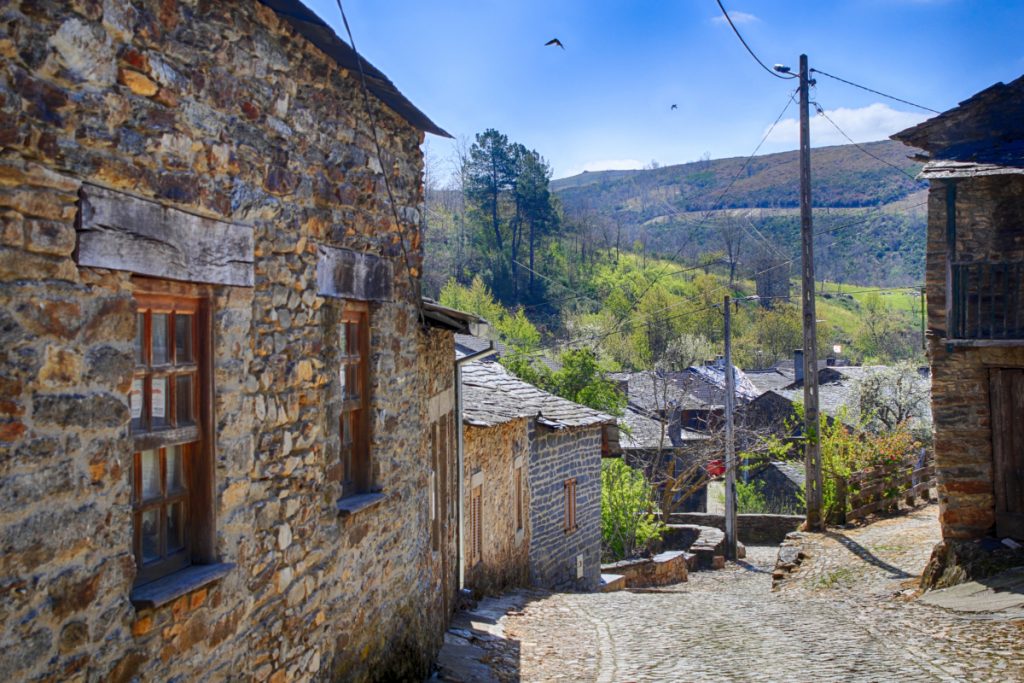
Rihonor de Castilla is a town in Castilla y León with just over 100 inhabitants. Despite its small size, it can boast of being the only town in Spain with two time zones. How is it possible? Because, in reality, it belongs to two countries, Spain and Portugal. Rihonor de Castilla is a town where bilingualism is common since the residents speak both Spanish and Portuguese. The inhabitants also share a unique language, Rihonorés, a dialect derived from Leonese.
It is a very peculiar municipality. Rihonor de Castilla, which belongs to the Zamorano municipality of Pedralba de la Pradería (Zamora) forms a unit with the Portuguese town of Río Onor. Both towns are one, divided by an imaginary line.
Because part of the urban area belongs to Spain and part to Portugal, bilingualism is common among its little more than 100 inhabitants -some 75 Portuguese and just over 30 in the Spanish.
The inhabitants of Rihonor de Castilla refer to the part of Zamora as Pueblo de Arriva or Povo de Xima and to the part of Portugal as Pueblo de Abajo or Povo de Abaixo.
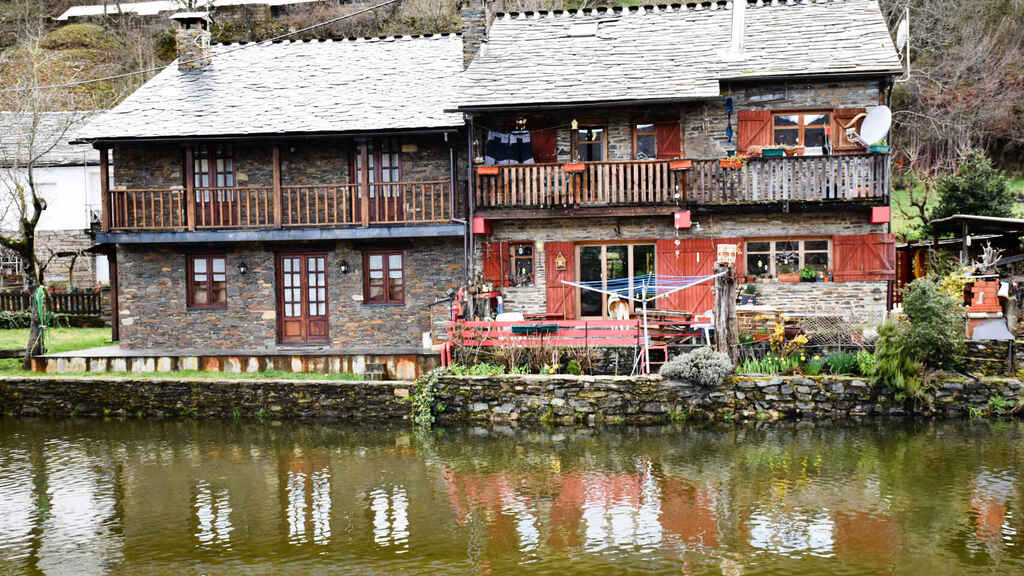
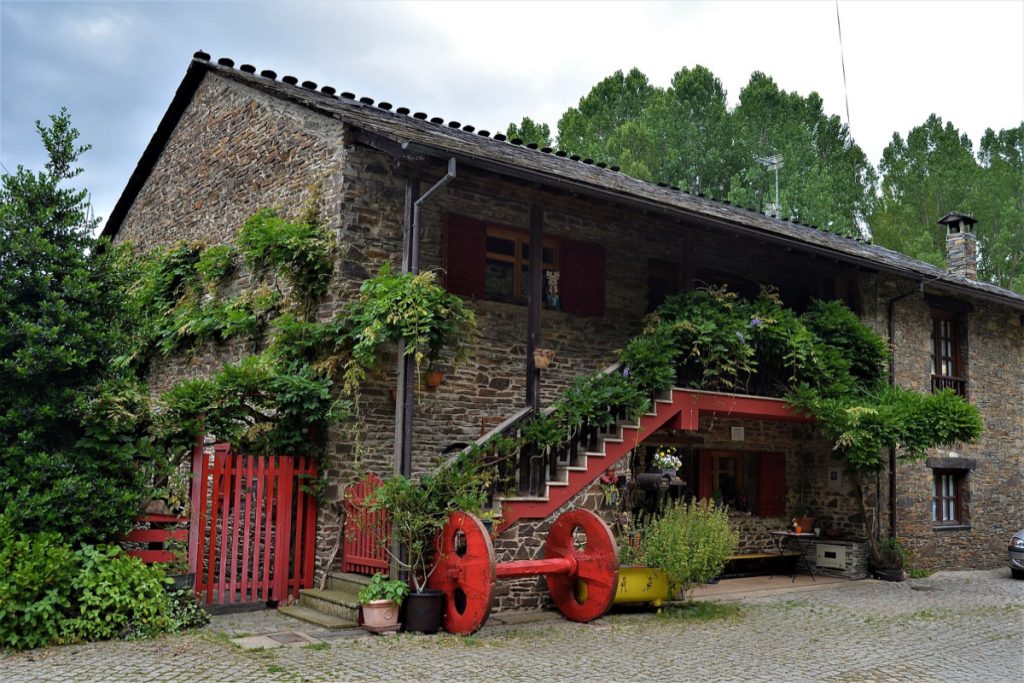
In the Modern Age, the town was integrated into the province of the Lands of the Count of Benavente. In 1833 the provinces as we know them today were restructured, and Rihonor de Castilla, still an independent municipality, became part of the province of Zamora.
In 1850 it was integrated into the term of Pedralba de la Pradería, where it remains to this day. Pedralba de la Pradería is a town located in the Sanabria region with a population of 200 inhabitants.
The main attraction of the only town in Spain with two time zones is the popular architecture. The houses maintain the architecture of yesteryear, with stone walls, slate roofs and wooden balconies.
Life in this small town is very quiet, and the residents only have to worry about adjusting the clock on both sides of the border, since in Portugal it is one hour less than in Spain.
 1
Like
Published at 8:37 PM Comments (0)
1
Like
Published at 8:37 PM Comments (0)
Unveiling Spain's Rudest and Most Courteous Cities
Friday, February 7, 2025
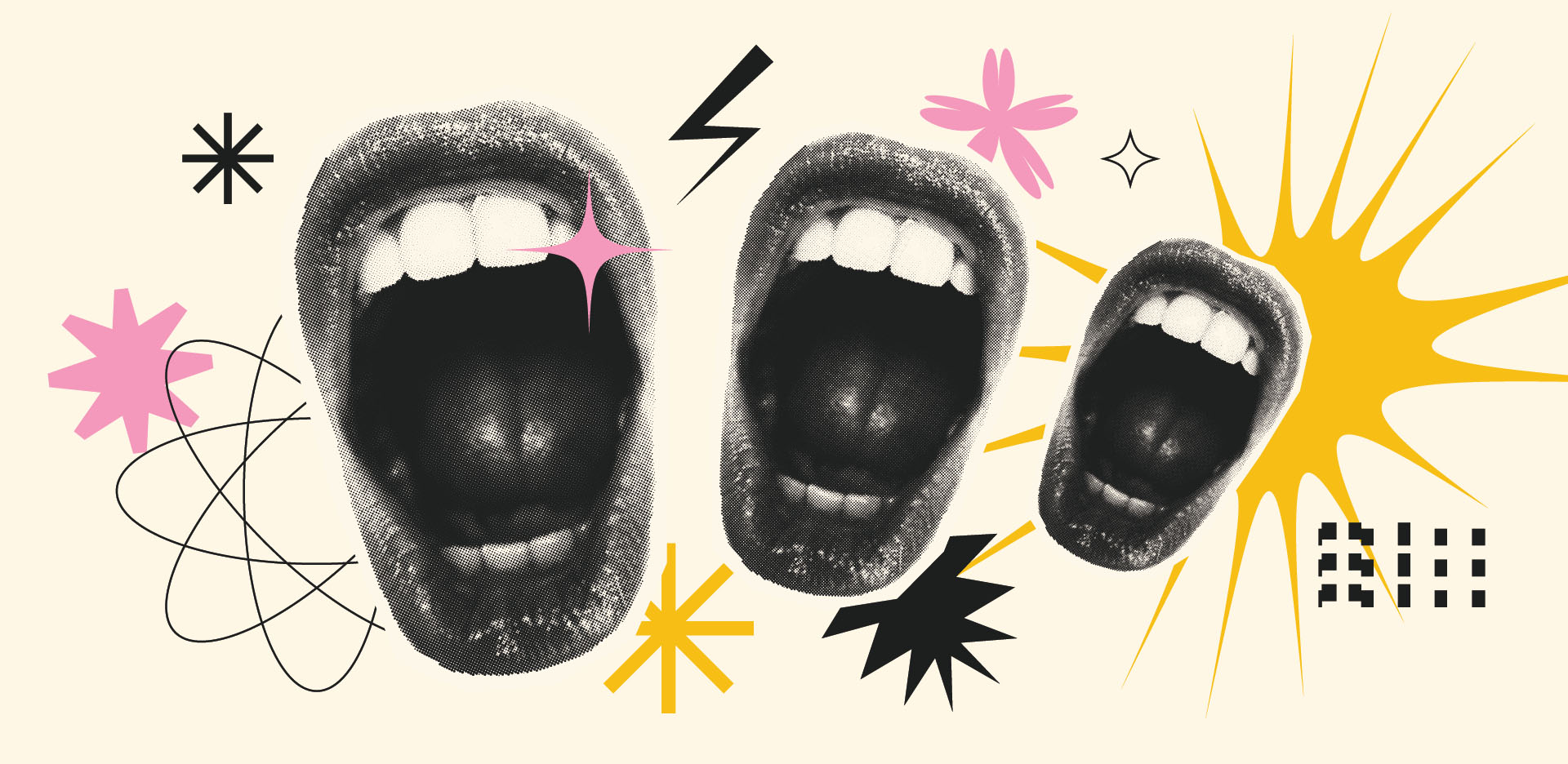
In today's interconnected and culturally diverse world, social etiquette plays a pivotal role in defining the character of a city. Understanding whether a city's inhabitants are generally polite or discourteous can influence tourism, business, and interpersonal relationships. A recent study conducted by Preply, a language learning platform, sheds light on the rudest and most courteous cities across Spain. This comprehensive analysis, published in April 2024, delves into the social behaviours that shape these perceptions across 19 significant Spanish cities. Whether you're a traveller, a foreign resident, or a local, understanding these dynamics can enhance your experience within Spain.
The Rudest Cities in Spain as Revealed by Preply
The findings of Preply's study identify several cities in Spain where residents may come off as ill-mannered to outsiders. Of these, Santa Cruz de Tenerife emerges as the city topping the list, with a score of 6.06 out of 10 for rudeness. This perception, as explained by the report, is driven by several behavioural tendencies, including an excessive amount of time spent on mobile phones and a lack of consideration in traffic situations, such as not yielding to other vehicles.
Granada follows with a score of 5.95, described by the study as a place where locals may occasionally exhibit a bad temper. Another city highlighted for its brash reputation is the coastal conurbation of Alicante-Elche, scoring 5.81, which surpassed the national average rudeness score of 5.53.
Further cities featuring in this less-than-flattering section of the report include San Sebastián (5.77), Bilbao (5.73), and Palma (5.69), with Barcelona and Málaga following closely with 5.64 and 5.61, respectively.
Here is a summary of some of the rudest cities as per the study:
- Santa Cruz de Tenerife - 6.06
- Granada - 5.95
- Alicante-Elche - 5.81
- San Sebastián - 5.77
- Bilbao - 5.73
The Most Courteous Cities in Spain
While some cities rank high on the rudeness scale, the study also celebrates the most polite and courteous locales. Topping this list is Vigo, scoring 5.17, marking it as Spain's politest city according to the survey.
Following Vigo, the A Coruña-Oleiros-Arteixo conurbation takes second place, showing that Galicia, as a region, boasts areas noted for their resident's considerate behaviour. Valencia and the Murcia-Orihuela area shoulder past participants, securing third and fourth place for politeness.
Evaluating Behaviour: What Makes a City Rude?
When assessing the rudeness of a city, the study took into account various day-to-day behaviours, which reflect residents' levels of courtesy and education. Among the widespread behaviours scrutinised, habitual mobile phone usage in public spaces emerged as a chief complaint, with San Sebastián reportedly leading in this respect.
Additionally, failing to acknowledge or greet strangers and viewing videos loudly in communal areas also contribute to the perception of impolite conduct.
Beyond public behaviour, the study includes driving etiquette, noting behaviours such as failing to concede way in traffic or not slowing down in pedestrian zones. Disrespect towards personal space further complicates these negative perceptions.
Such behaviours, though they may appear trivial on the surface, cumulatively feed into broader societal impressions that ultimately define the amiability of a city.
The Tipping Culture in Spanish Cities
Tipping etiquette traditionally varies across cultures, and within Spain, the study highlights disparities in how freely tips are given across different cities. Santa Cruz de Tenerife, already positioned as the rudest city, reportedly has the lowest tipping percentage at 6.10%.
Other cities exhibiting less generous tipping habits include San Sebastián and the Murcia-Orihuela area, with percentages of 6.16% and 6.49%, respectively.
On the contrary, residents of Valladolid appear to be the most generous tippers, with an average tipping rate of 10.18%. Las Palmas de Gran Canaria and the A Coruña-Oleiros-Arteixo area follow in generosity.
The results of this study provide insightful data for both locals and travellers. For local government and city planners, understanding these perceptions can inform strategies to improve local etiquette through civic education and training. For businesses, especially those in the hospitality industry, this data offers an opportunity to tailor customer service practices to mitigate perceived rudeness and enhance visitor experience.
On a personal level, these insights encourage both locals and visitors to reflect on their own social behaviours and the impact these may have on community harmony. By fostering a culture of politeness and consideration, cities can enhance their reputation, attracting more tourists and creating a welcoming environment for new residents.
The study by Preply serves as a reminder of the importance of courteous behaviour in shaping the perception and experience of a city. Whether in the bustling streets of Madrid or the tranquil corners of Galicia, being considerate, respectful, and genuine can make a significant difference.
As the global community grows more interconnected, promoting understanding and polite interaction within different cultural contexts becomes increasingly essential. Regardless of the rankings, every city in Spain offers its unique charm and appeal, and Spain continues to be a welcoming destination—where respect and kindness cultivate a positive atmosphere for everyone to enjoy.
 4
Like
Published at 9:54 PM Comments (0)
4
Like
Published at 9:54 PM Comments (0)
The Knights Templar in Spain: Following the Trail of a Secret Order
Thursday, February 6, 2025
Spain, a land steeped in history and legend, holds within its borders the remnants of a powerful and enigmatic order: the Knights Templar. These warrior monks, sworn to protect pilgrims and fight in the Crusades, left an indelible mark on the Iberian Peninsula, a legacy that endures to this day in the form of imposing castles, serene churches, and whispers of secret rituals.
Rise of the Order in Spain
The Knights Templar arrived in Spain during the Reconquista, the centuries-long struggle to reclaim the peninsula from Moorish rule. Their military prowess and organizational skills made them invaluable allies to the Christian kingdoms. Kings granted them lands and privileges, allowing them to establish a network of commanderies – fortified settlements that served as bases for their operations.
Key Templar Sites
- Castle of Ponferrada (Castilla y León): This imposing fortress, perched on a hill overlooking the town of Ponferrada, was a key Templar stronghold. Explore its towers, ramparts, and keep, imagining the knights who once walked its halls.

- Monastery of San Juan de Duero (Soria): This Romanesque monastery boasts a unique cloister featuring intricate interlaced arches, a testament to the Templars' architectural influence.
- Church of Vera Cruz (Segovia): This 13th-century church, with its distinctive dodecagonal shape, is believed to have been modelled after the Church of the Holy Sepulchre in Jerusalem.
- Castle of Peñíscola (Valencia): Perched dramatically on a rocky headland, this castle served as a Templar refuge and later as the papal seat of Benedict XIII during the Western Schism.
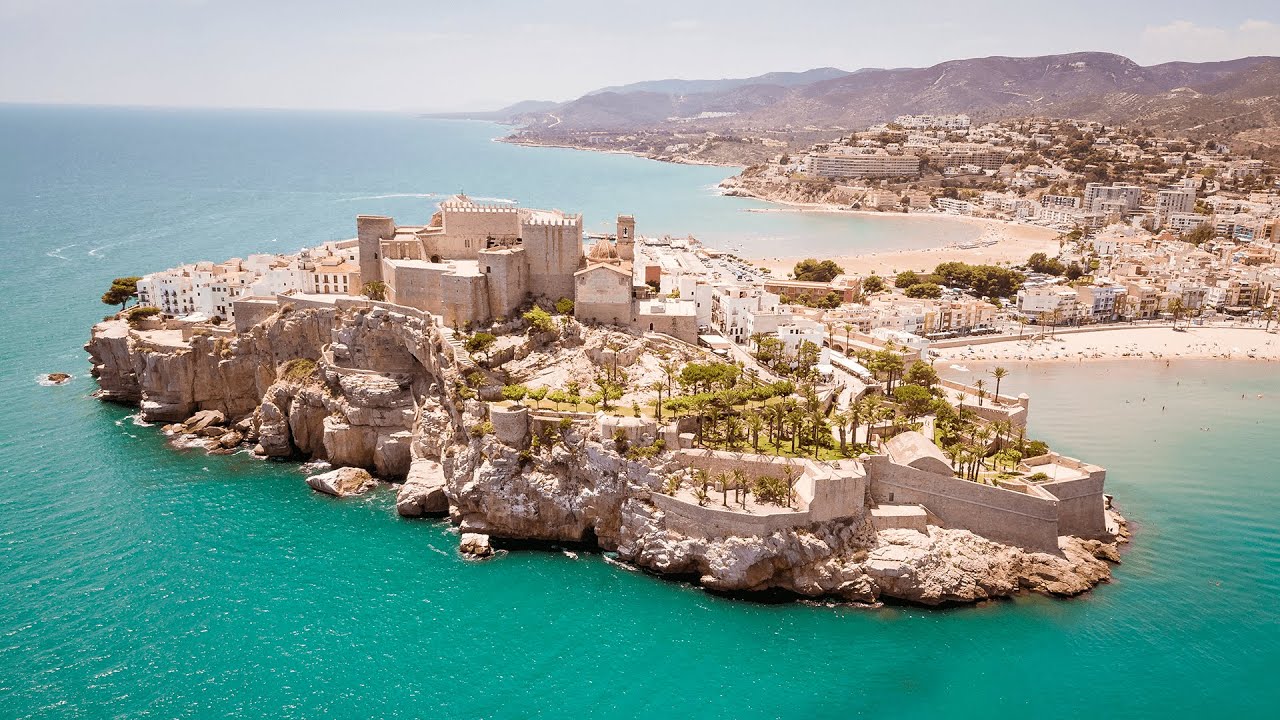
Beyond the Stones: Legends and Mysteries
The Templars were shrouded in secrecy, fueling speculation and legend. Some believe they possess hidden knowledge and vast treasures, while others associate them with mystical practices. While separating fact from fiction can be challenging, these mysteries add to the allure of exploring their history in Spain.
A Journey Through Time
Following the trail of the Knights Templar in Spain is a journey through time, a chance to connect with a fascinating chapter in history. Whether you're exploring a majestic castle or deciphering cryptic symbols in an ancient church, the spirit of these warrior monks continues to resonate across the Spanish landscape. So, embark on your own quest and uncover the secrets of the Knights Templar in Spain.
 3
Like
Published at 1:32 PM Comments (0)
3
Like
Published at 1:32 PM Comments (0)
The Museum of Anatomy - A Mummified Collection
Saturday, February 1, 2025
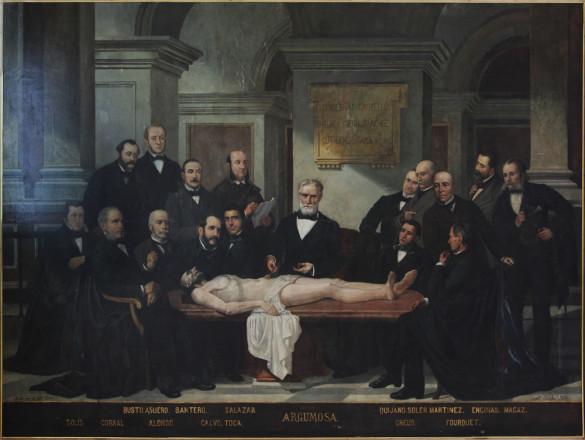
An incredible collection of anatomical models, mummified body parts, and human bones can be discovered in one of the world's oldest universities.
The Universidad Complutense of Madrid is one of the oldest universities in the world. Its story begins as far back as 1293 when the Archbishop of Toledo was granted a charter by King Sancho IV of Castile to found a “studium generale.” Two hundred years later, in 1499, Pope Alexander VI granted a papal bull, which expanded the Complutense into a full university.
Today, the best reason to visit the University is its Museum of Anatomy, “Javier Puerta,” created in 1787 by royal decree of King Charles III, who was known for his contributions to science and research.

Part of the college of medicine, the museum is made up of anatomical models, mummified and artificial body parts, and three sculpture collections. The wax polychrome sculpture collection displays a series of anatomically precise wax models, representing the stages of pregnancy from conception to childbirth, the oldest of which dates back to 1794. The plaster polychrome sculpture collection is essentially a collection of plaster sculptures of human body parts. The ominous-sounding bone collection is comprised of thousands of skulls and two skeletons.
One of these, which dates back to the Spanish War of Independence (1807-1814), is the skeleton of a French farmer and grenadier who, due to the mercury salts in his bones, is speculated to have been killed by mercury poisoning. The other is the skeleton of the so-called Extremeño Giant, said to have been brought to the museum alive by Pedro Gonzalez de Velasco, the museum’s director at the time.
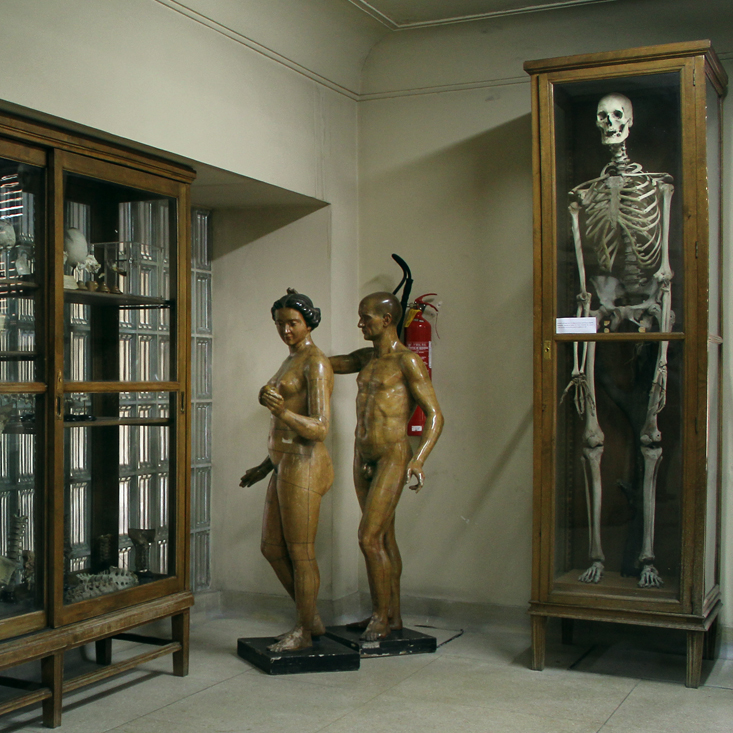
To be sure that the museum is open at the time you'd like to visit, give them a call at +34 913 94 13 74, or request an appointment by email at fviejo@med.ucm.es.
 0
Like
Published at 1:01 AM Comments (0)
0
Like
Published at 1:01 AM Comments (0)
Spam post or Abuse? Please let us know
|
|